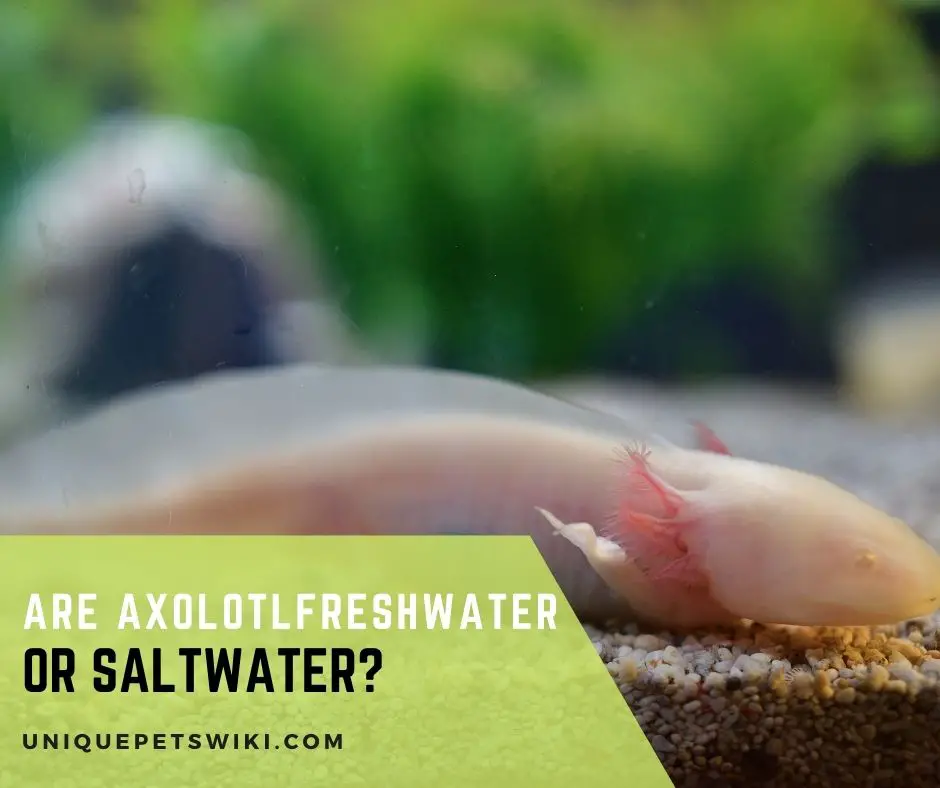An axolotl is a one-of-a-kind pet with a conspicuous appearance, and their low maintenance wins the heart of many enthusiasts.
Axolotls are easy to care for but require the right aquatic environment to survive.
Now that can make you wonder, are axolotl freshwater or saltwater? By reading this article, you will know the right environment where an axolotl can thrive and a lot more.
Contents
Are Axolotl Freshwater or Saltwater?
The origin of an axolotl gives insight into which environment is suitable for these pets to live in and thrive.
If we journey back to their origins, axolotls are native to several lakes, including L. Xochimilco & L. Chalco in Mexico, inland away from the saltwater oceans. And this tells you that axolotls are freshwater creatures.
They are aquatic animals accustomed to living inside water throughout their lives and usually do not respond positively when outside of water.
Although axolotls perform best in freshwater, they can tolerate a certain salinity level. That is because their natural habitats sometimes contain traces of salts.
Also read: Are Axolotls Saltwater?
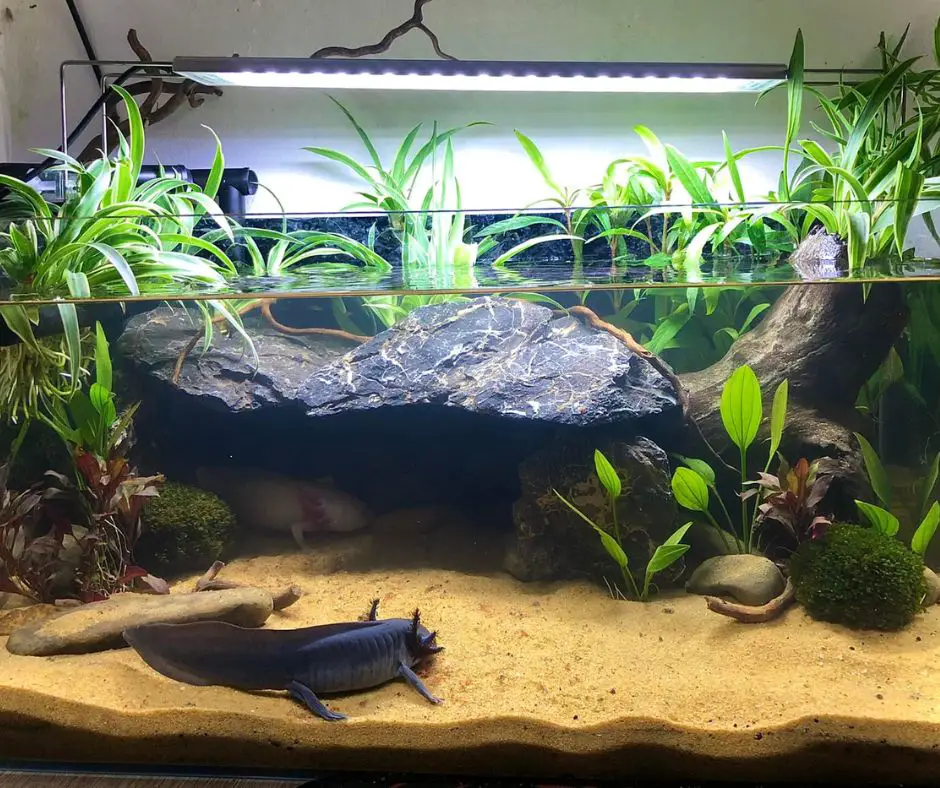
What Kind of Water Do Axolotls Need?
An axolotl is comfortable living in brackish water, and this is what they require. Brackish water is a mix between salt and freshwater.
It’s not bad to have your axolotl in freshwater, but it’s ideal to have them in brackish water. Subjecting them to this kind of habitat fulfills their need for slightly hard water.
Brackish water equates with the natural habitat of an axolotl. Freshwater aquariums’ general hardness (GH) ranges between 4-8 dGH (or 70-140ppm).
The truth is that all animals need some minerals in their habitat, including axolotls.
The fact that axolotl’s natural habitat is supplied from springs and mountain snowmelt makes them do well in a moderately hard-water range from 7-14° (125-250ppm).
High water quality is imperative to enhance the long-term success of your axolotl.
How To Make Brackish Water for Axolotl?
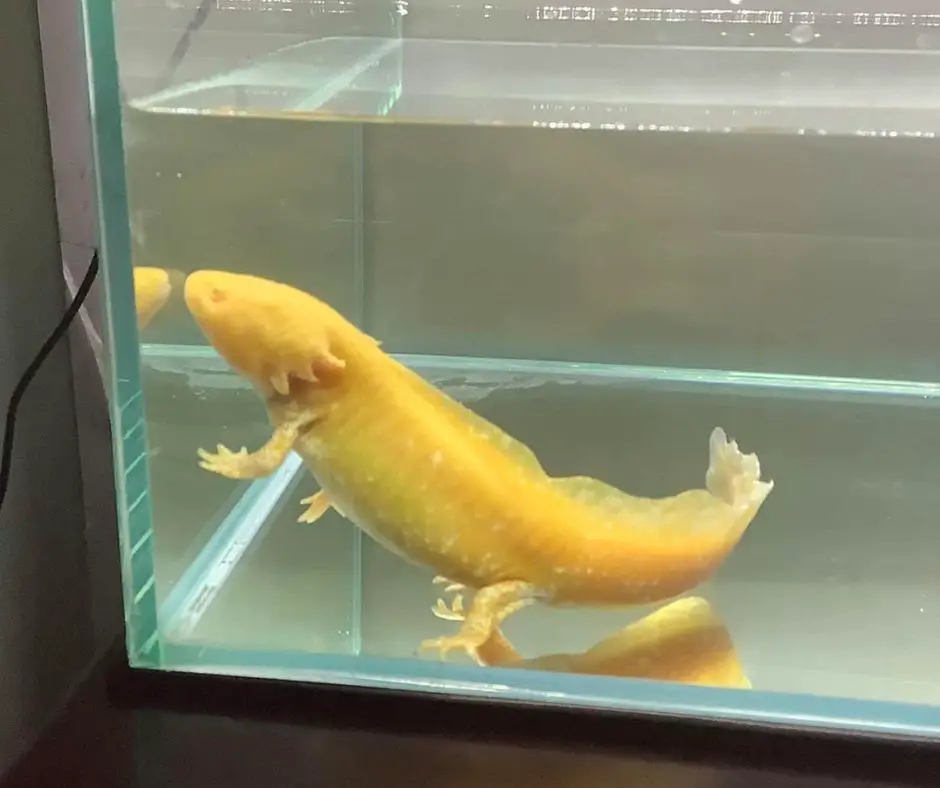
Axolotls live in close contact with their aquatic environment.
Therefore, keeping axolotls in quality water is of utmost importance where they can perform their biological functions, such as respiration, hydration, etc., effectively.
Creating a healthy environment for your axolotl enhances its survival and prolongs life. It’s important to have a specialized axolotl water recipe for your pet’s optimal health.
There are a couple of saltwater recipes for the axolotl, where the most renowned is Holtfreter’s Solution mixed by German axolotl researcher Johannes Holtfreter.
It requires you to use water filtered through a carbon and particulate filter, UV light, and treated with a dichlorinator or deionized/distilled water. Chlorine is unforgiving to axolotls; it can kill them.
The components used include NaCl, CaCl2, KCl, and NaHCO3. The recipe for Holtfreter’s Solution comprises:
Holtfreter’s Solution (per one liter of water)
- Sodium Chloride (NaCl) salt, non-iodized: 3.46 g
- Potassium Chloride (KCl): 0.05g
- Calcium Chloride (CaCl2): 0.1g
- Sodium bicarbonate (NaHCO3): 0.2g
Dissolve the salts separately with some of your one-liter water, then mix them together.
Axolotls require a tank with a good filter and gently flowing water. Their gills are delicate and can break in a high rapid water flow.
Therefore, you must get a filter with adjustable water flow. Add brackish water to your axolotl tank and allow enough time for the nitrogen cycle to complete.
It can take around 10-14 days or a couple of weeks for nitrogen to cycle, and then you can introduce your axolotl.
Change the tank water regularly to keep the nitrate level low, usually below 40ppm.
The live plants in the tank will absorb some nitrate, but changing water is necessary since you remove other stressing components and nitrate in tandem.
API Aquarium Salt
- Contains one (1) API AQUARIUM SALT Freshwater Aquarium Salt 65-Ounce Box
- Promotes fish health and disease recovery with increased electrolytes
- Improves respiration for fish in freshwater aquariums
- Made from evaporated sea water for all-natural results
- Use when changing water, when setting up a new freshwater aquarium and when treating fish disease
Last update on 2022-12-29 / Affiliate links / Images from Amazon Product Advertising API
Can Axolotls Live in Tap Water?
Yes, axolotls can live in tap water. However, chlorine in tap water can be disastrous to these pets; hence, you should dechlorinate it first.
The chlorine level in tap water can vary; it could be in larger or smaller quantities.
It’s better to provide a habitat where you know your axolotl is secure. Ensure the water is chlorine-free before you use it in the tank.
You can pre-treat the water with an aquarium water conditioner that removes chlorine and chloramines.
Alternatively, leaving tap water to stand for about 24 hours is also an effective way to get rid of chlorine.
That is possible because chlorine is volatile; hence, it evaporates without issues, but the air must be warm enough.
Using a conditioner remains the most convenient method, but you can go the second way if you don’t need to spend money.
Whichever the case, avoid fetching tap water and put it immediately in your pet’s tank.
Maintaining good quality water is necessary since axolotls absorb water and oxygen through their skin. If they take in impurities, it will harm them.
Also read: Full Requirements & Water Conditions for Axolotl in Captivity
Proper Water Parameters for an Axolotl Tank
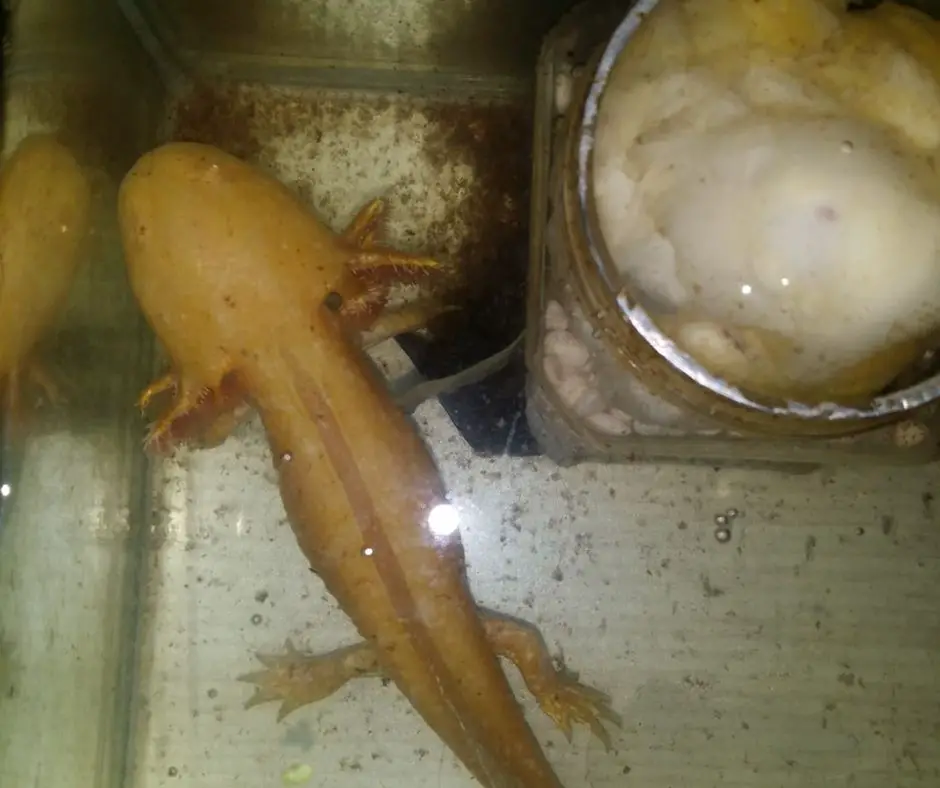
A slight mistake in an axolotl tank can mean the death of your beloved axy. Axolotls are sensitive to many things, so you should spend time making sure nothing is compromised in their tank.
One way of protecting your axolotl from health problems is providing a suitable habitat.
Many water test kits are available, typically ranging from liquid drops/test strips with digital probes or visual colorimetric changes.
The kit to buy depends on the condition of your pocket and the degree of accuracy required. Below are the critical water parameters in an axolotl tank and their appropriate level in brief.
- pH range: 7.4 – 7.6.
- Carbonate Hardness (KH) or Alkalinity: 3–8°
- General Hardness (GH): 7–14°
- Temperature: 16-18 °C (between 60 – 64 Fahrenheit)
- nitrate level: <40ppm
- ammonia and nitrite levels need to always be at 0 ppm
- Oxygen: 70–100%
- Chlorine/Chloramine: less than 0.5 mg/L
Also read: pH for Axolotl and Tips to Maintain
How Often Should You Change Your Axolotl Water?
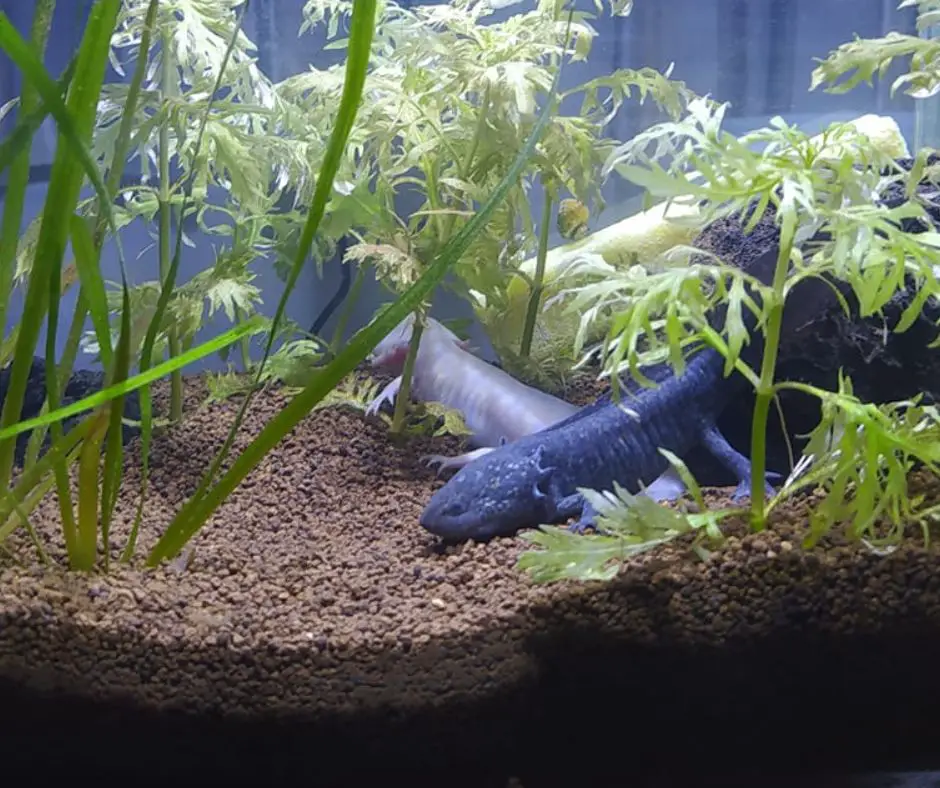
Ideally, you should change your axolotl water once every week and spot clean the tank daily. Whether you have a filter or not, it’s imperative to change about 25-50% of water in the tank weekly.
Changing the water prevents the accumulation of ammonia, nitrite, and nitrate in the tank.
Ammonia is a major excrete of axolotls. Once left to build up in the tank, it will cause damage to gills, impair gas exchange, and neurological damage.
Nitrite stems from the oxidation of ammonia by nitrifying bacteria. Nitrite is lethal to axolotl even at 0.5mg/l.
The tank needs to be free from this compound. Nitrate is what you get after ammonia decays completely.
This compound tends to build up in the tank over time. Under poor husbandry, nitrate will amass and jeopardize the axolotl’s health.
So, multiple partial changes of water from your axolotl tank are the proper way to treat ammonia, nitrite, and nitrate toxicosis.
Even if you have a filter, it doesn’t clean everything, and that’s why you should change the water constantly to keep the water fresh and clean.
Also read: How To Clean Axolotl Poop: 3 Basic Ways
How to Change your Axolotl Tank Water
An ideal way to remove waste from your axolotl tank is by using a siphon where you put it between rocks and crevices. Axolotls constantly feed; hence, they excrete more often.
The siphon helps get rid of stagnant water and all waste materials in the tank. A regular gravel siphon will not be much helpful in this work, but you can use its tube without the siphon.
Regular change of water is part of maintaining your axy’s tank. You will also need to physically remove old tank water, replace it with new, and condition the water appropriately.
Should I Put Salt in My Axolotl Tank?
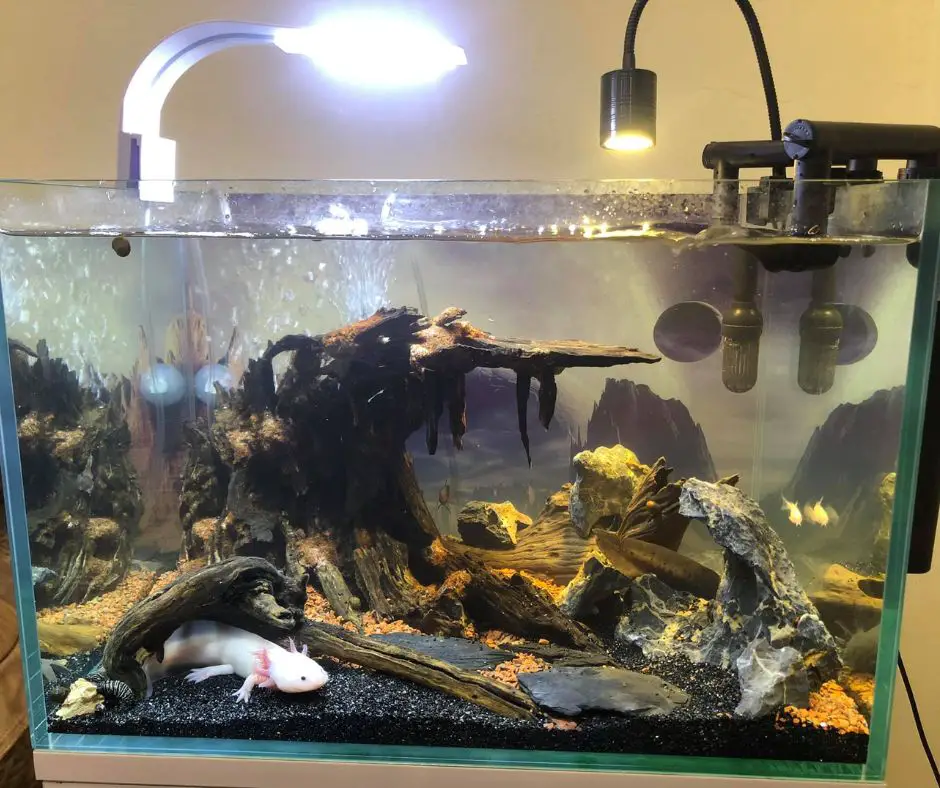
Yes, a bit of hard water is beneficial to axolotls. You can use aquarium salt, kosher salt, or sea salt but avoid using table salt.
The natural habitat of axolotls contains some degree of salt, and this is what we emulate.
It’s okay to add some water in your axolotl tank occasionally, but don’t put too much of it. Too much salt is harmful to these pets.
Use dechlorinated water to dissolve the salts to provide a suitable place where the axolotl will be comfortable and safe.
Table salt is harmful because it contains iodine, which is harmful to axolotl.
When you provide it in the right proportion, saltwater helps to treat several conditions, including fungal and other infections. A salt bath helps to cure fungal and bacterial infections in axolotls.
Also read: Axolotl Fungus Treatment
Laifoo Aquarium Siphon Vacuum Cleaner
- FUNCTION --- Easy to control, convenient to siphon fish faeces, impurities, turbid water out of fish tank.
- 7 Feet HOSE --- Made from clear & elastic plastic. Makes it more durable and anti-kinking. Harmless to fishes & No peculiar smell.
- GRAVEL TUBE --- Sinkable, with a detachable filter screen inside. Will not disturb fish or decor when it's working.
- SIPHON BALL --- All you need to do is to pinch it several times, water will flow out automatically. Without striking a blowing.
- WARRANTY --- For 3 months after the date of purchase, we take care of all quality-related issues with a FREE replacement or refund. If you have any questions, do not hesitate to contact our professional after-sale service.
Last update on 2022-12-29 / Affiliate links / Images from Amazon Product Advertising API
In Conclusion
Water is fundamental in axolotl care because these pets cannot live outside water, and they need quality water to survive.
Poor quality water indicates that you have failed in your responsibility to take care of your pet.
Axolotls are freshwater creatures, but they do extremely well in brackish water. Brackish water comes with many minerals that benefit axolotls, including potassium, sodium, and calcium chloride.
Tap water is often used in axolotl’s tank, but when it doesn’t have chlorine. You should dechlorinate the water because chlorine is terrible to axolotls.
Likewise, iodine from table salt is harmful to axolotls; hence you shouldn’t use it.
